
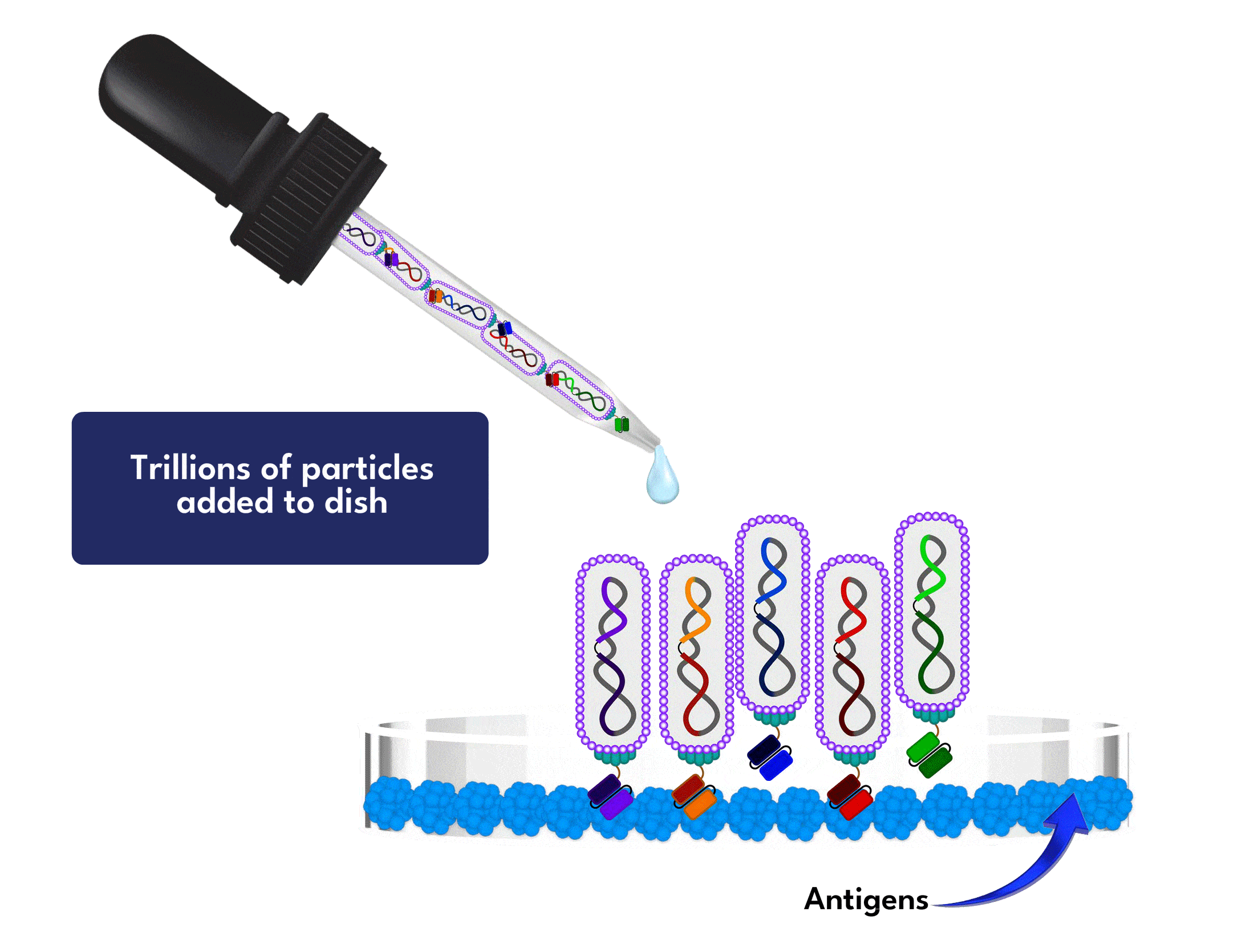
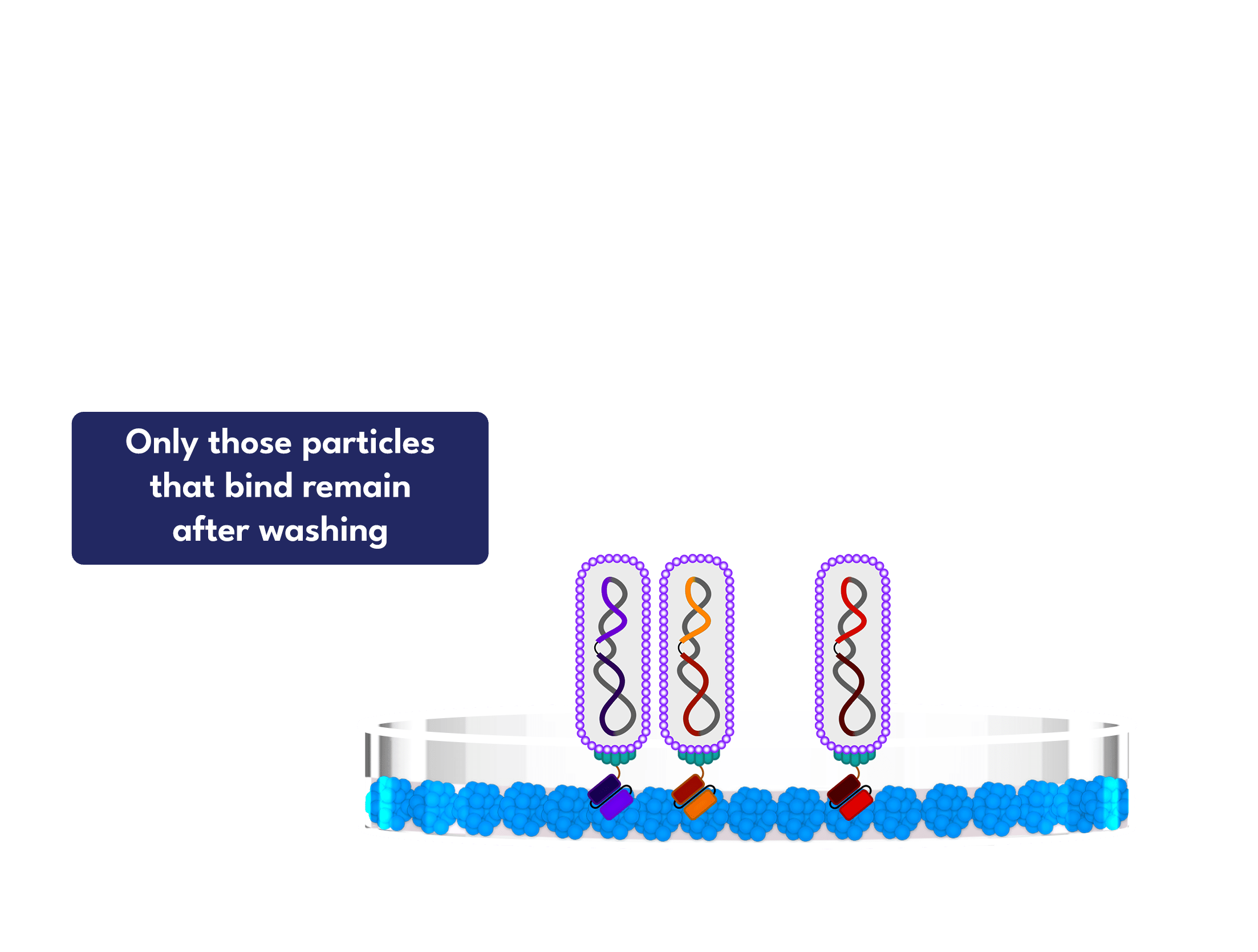
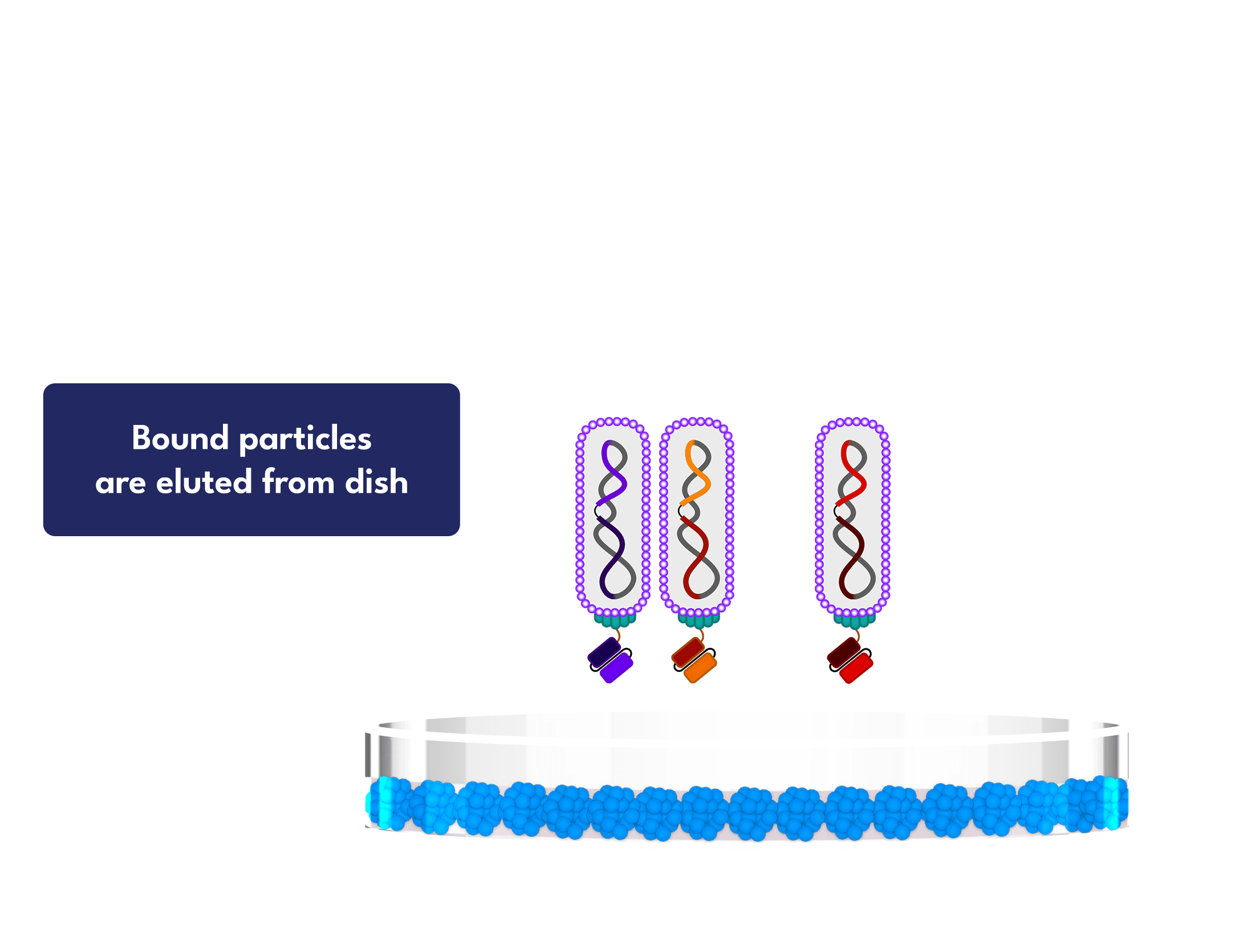
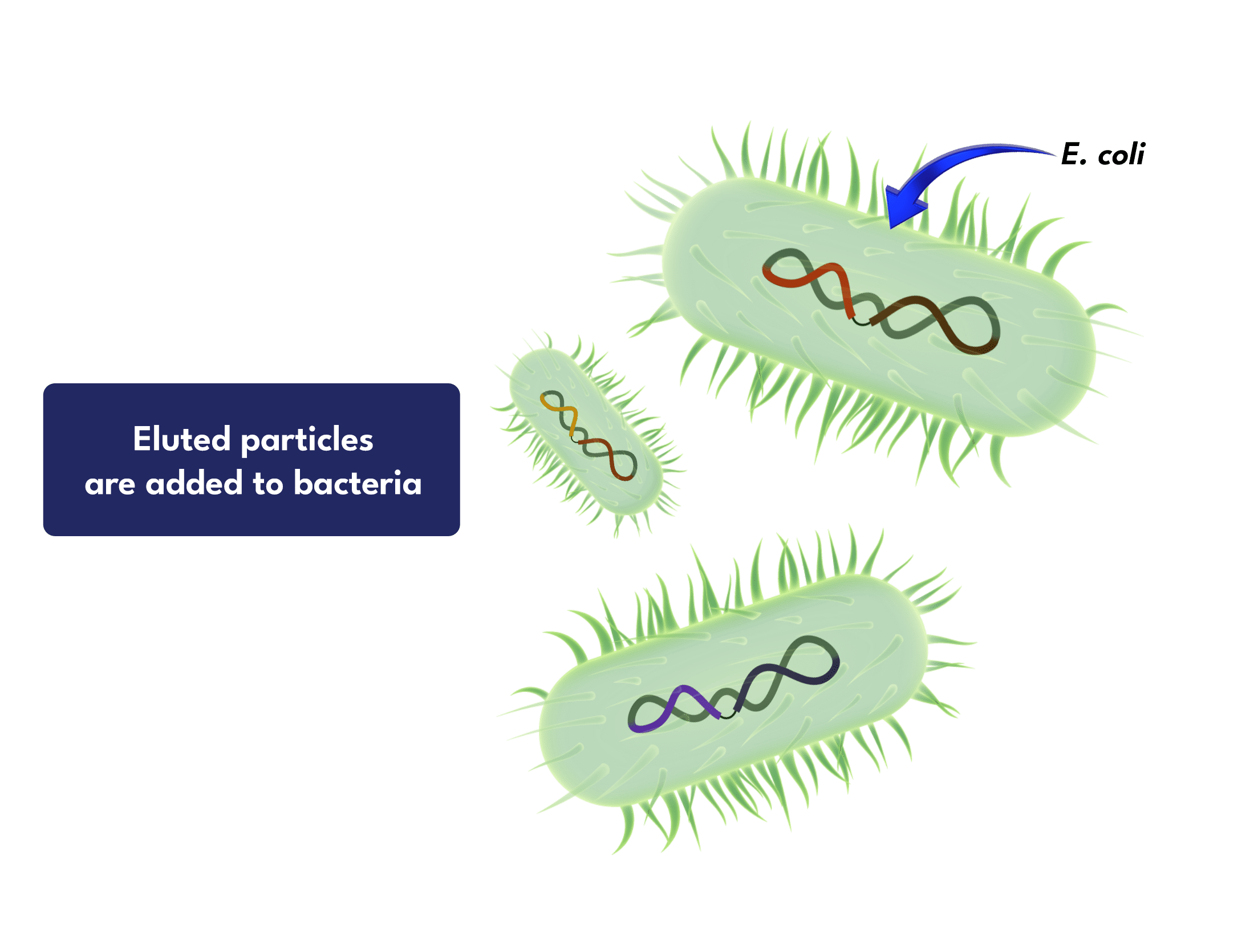
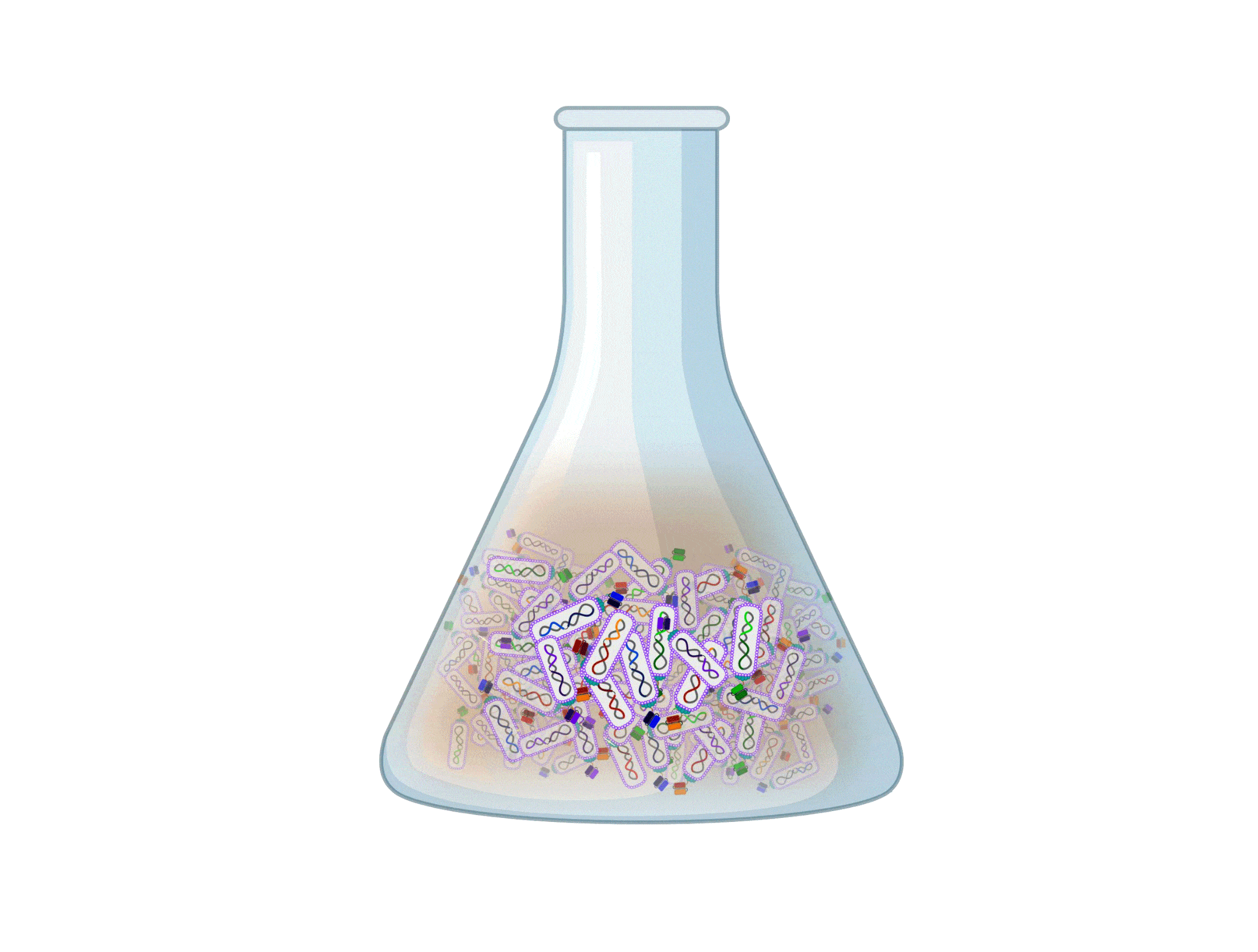
The CANIBODY™ Library comprises billions of phage particles, each with an antibody on its surface and the DNA needed for that antibody’s replication within the particle.
The antibody selection process begins with a small amount of the CANIBODY Library being added to a dish coated with the target antigen. During incubation, phage particles carrying antigen-specific antibodies bind to the target antigen coating the dish, enabling their absorption.
Following incubation, a thorough washing step is performed to remove non-absorbed phage particles. In this simplified representation, only three particles remain, but typically thousands of antibody-expressing particles remain captured by the target antigen after the washing process.
Bound phage particles are effectively separated from the dish by introducing high or low pH solutions or through proprietary methods.
The target antigen-specific phage particles infect cultures of E. coli bacteria, providing the bacteria with instructions on making and generating more of the absorbed antibodies.
The infected bacteria rapidly multiply thousands of times to produce a new library of particles to the selected antigen.

The CANIBODY™ Library comprises billions of phage particles, each with an antibody on its surface and the DNA needed for that antibody’s replication within the particle.
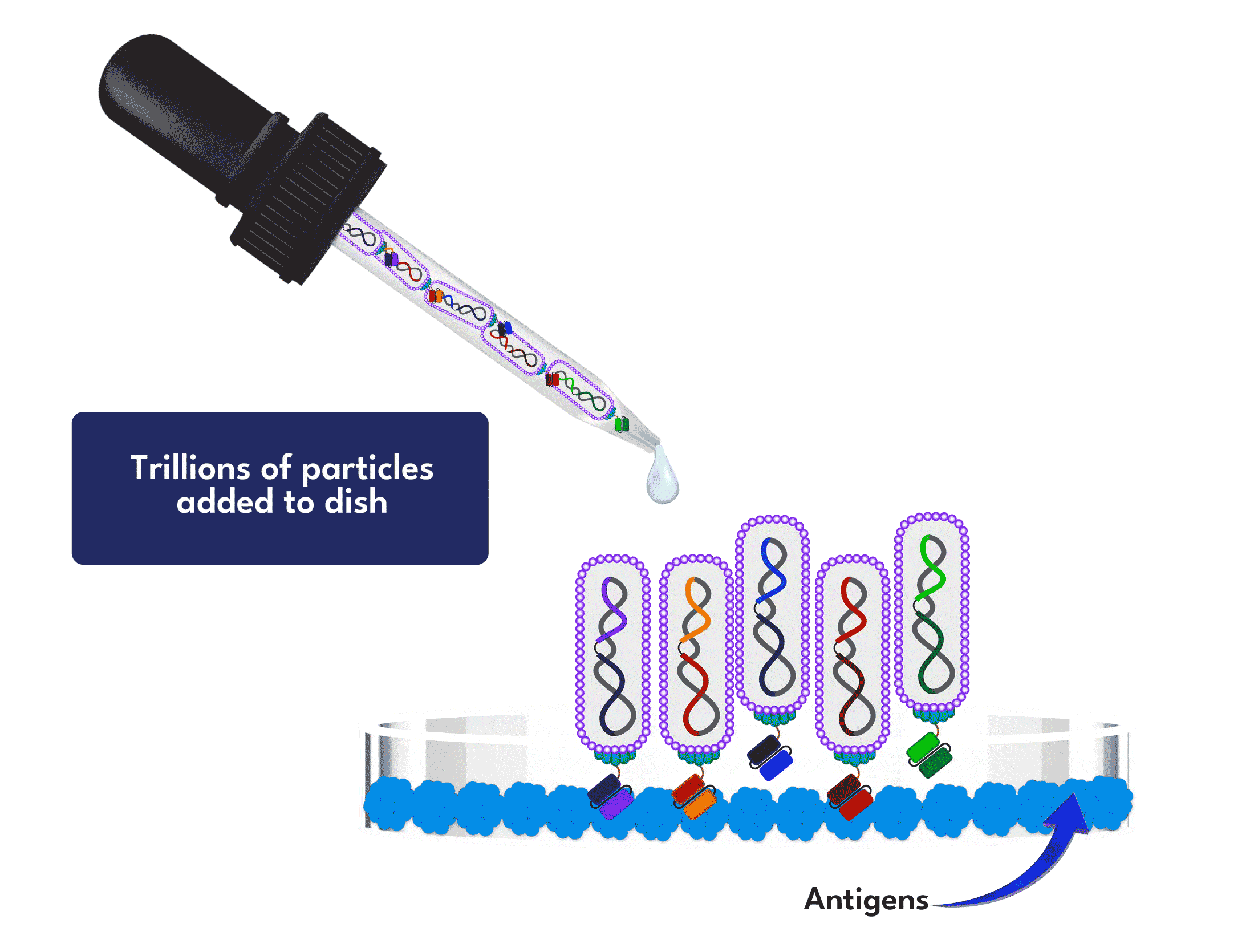
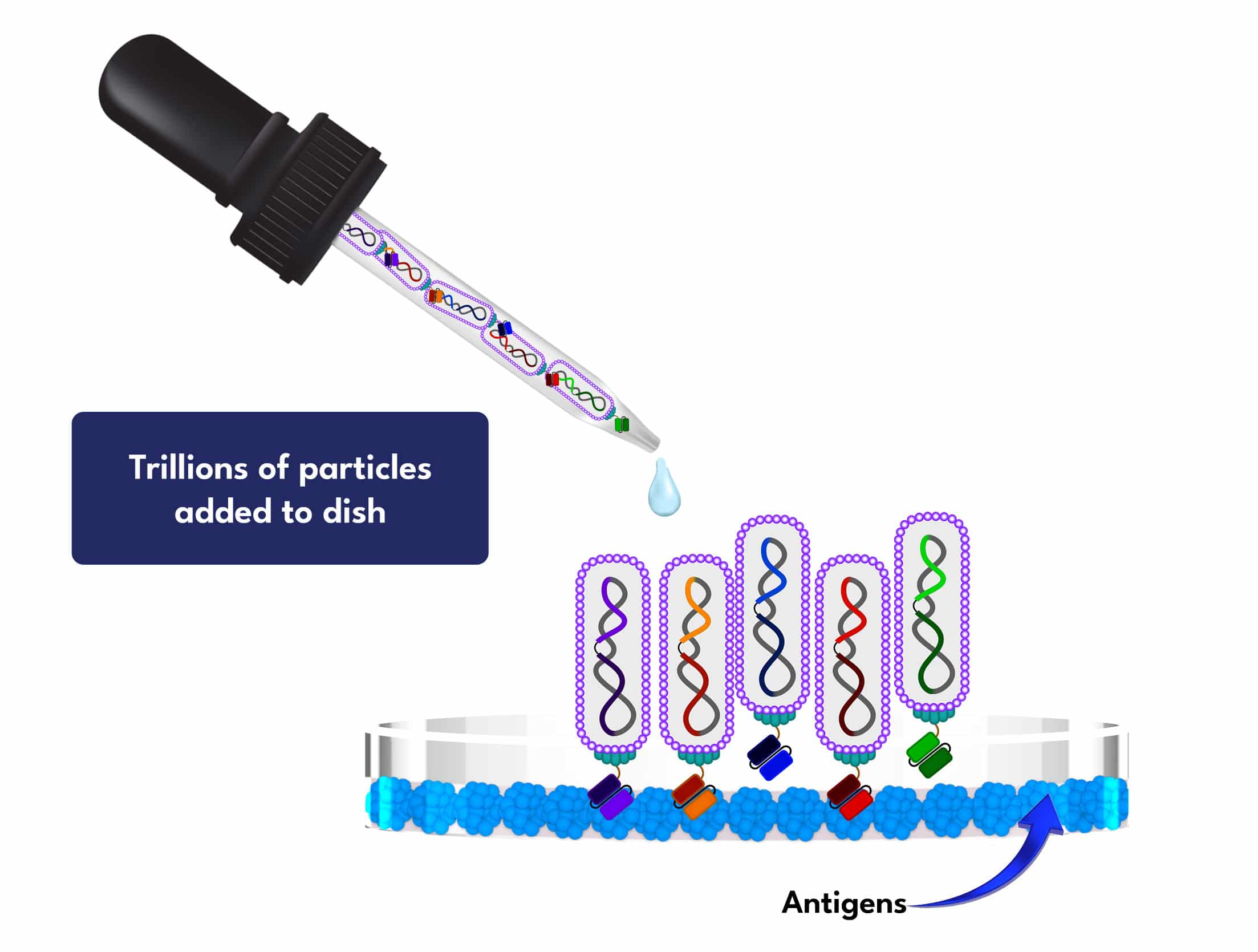
The antibody selection process begins with a small amount of the CANIBODY Library being added to a dish coated with the target antigen. During incubation, phage particles carrying antigen-specific antibodies bind to the target antigen coating the dish, enabling their absorption.

Following incubation, a thorough washing step is performed to remove non-absorbed phage particles. In this simplified representation, only three particles remain, but typically thousands of antibody-expressing particles remain captured by the target antigen after the washing process.

Bound phage particles are effectively separated from the dish by introducing high or low pH solutions or through proprietary methods.
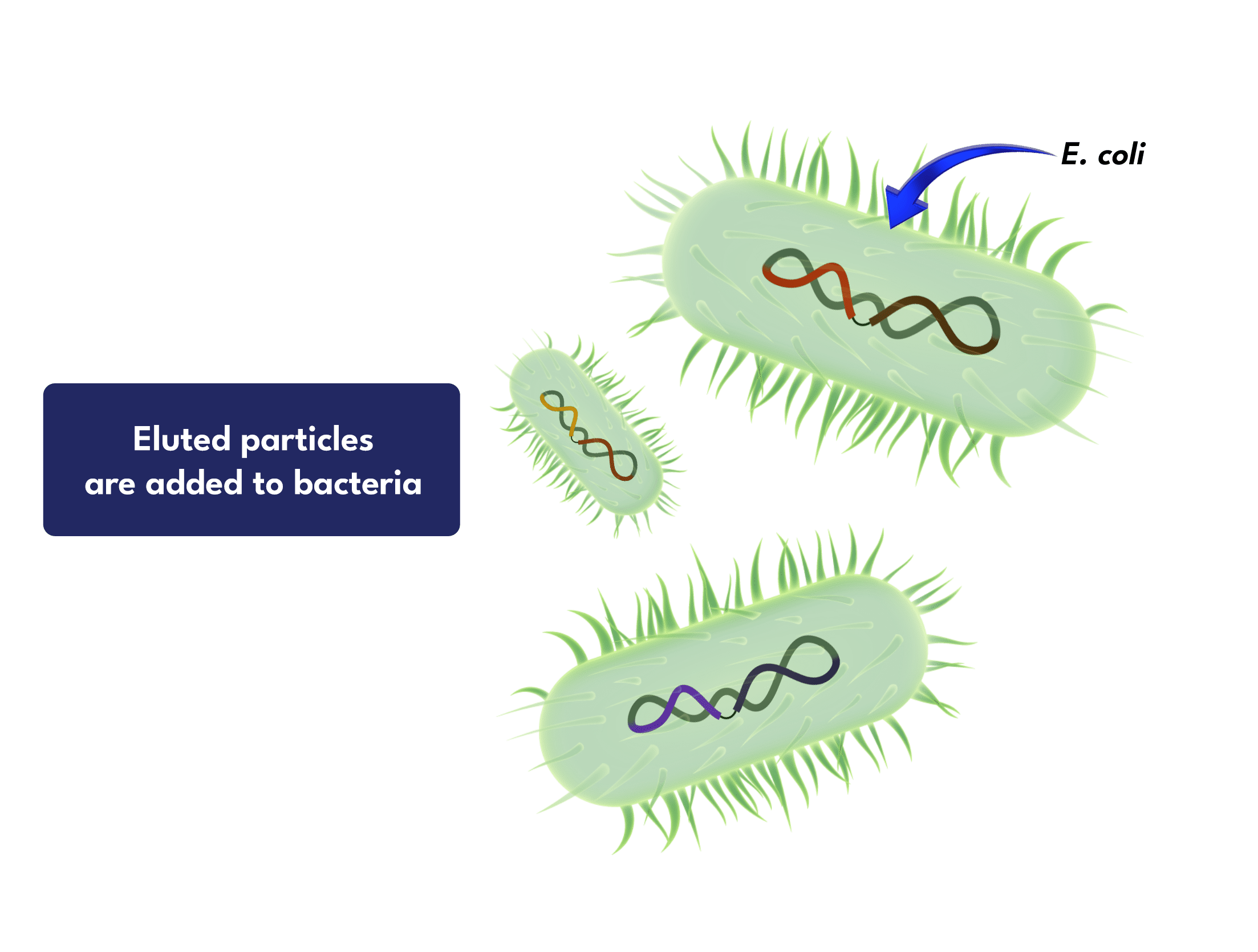
The target antigen-specific phage particles infect cultures of E. coli bacteria, providing the bacteria with instructions on making and generating more of the absorbed antibodies.

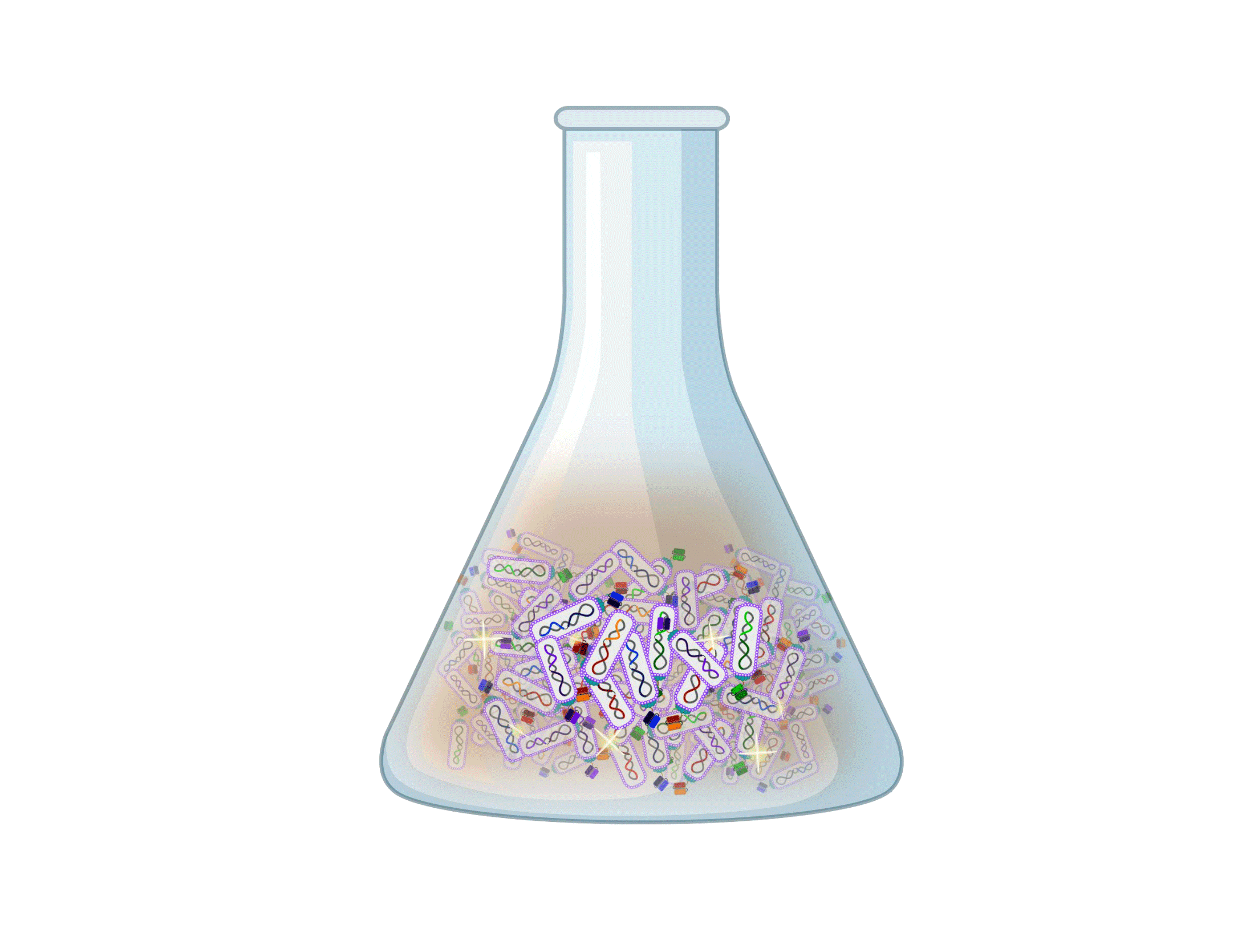
The infected bacteria rapidly multiply thousands of times to produce a new library of particles to the selected antigen.
This entire process is repeated 2-3 more times resulting in a final collection of phage particles with high affinity and specificity for the target antigen.
A complete antibody selection campaign can often be completed in just a few weeks.
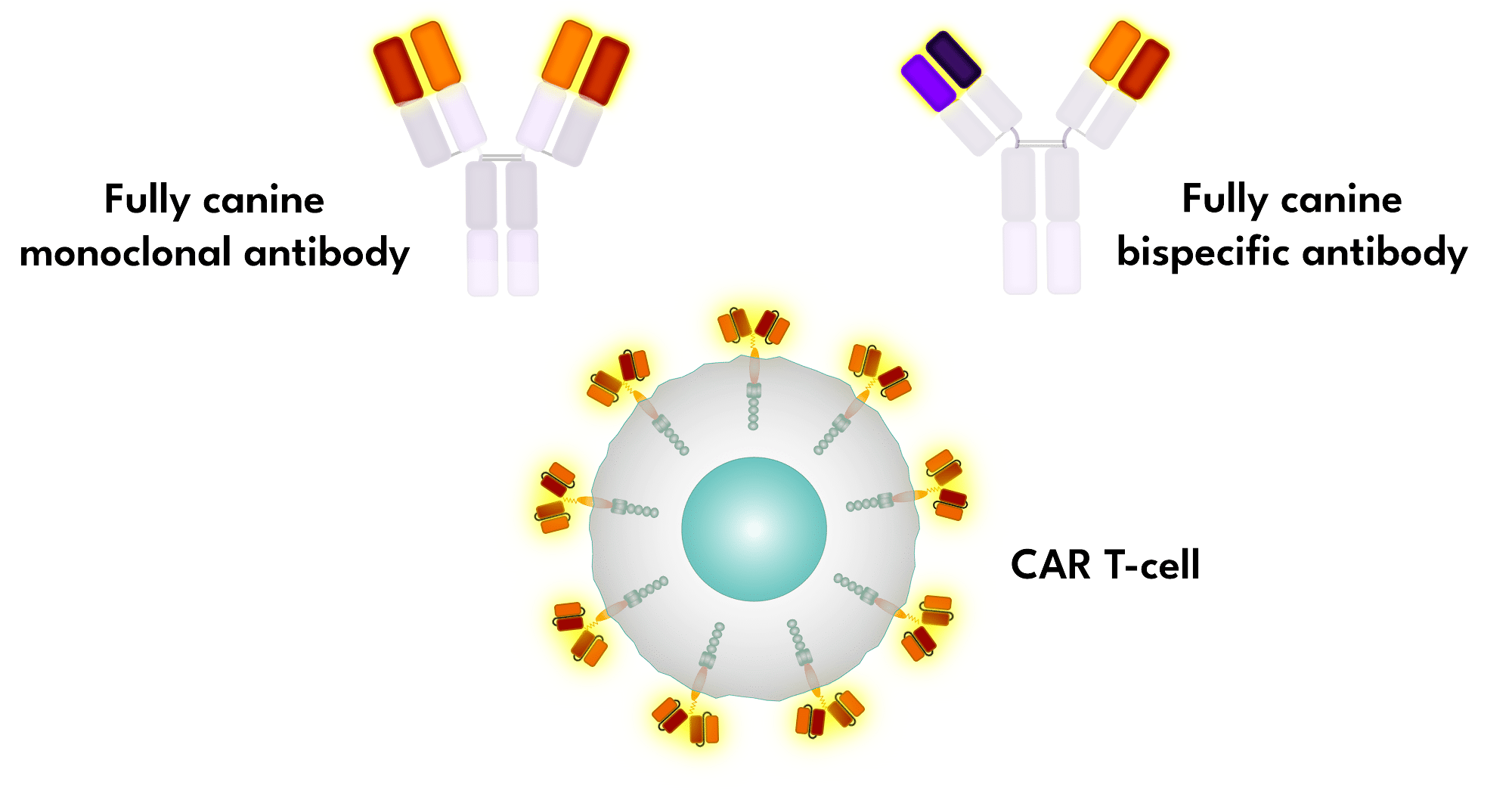
The antibody DNA from the selected phage particles can be expressed in various systems, offering a range of products, tailored to specific applications.
This includes:
• Monoclonal antibodies
• Bispecific antibodies
• CAR T-cells
And other possibilities beyond the three examples shown above.